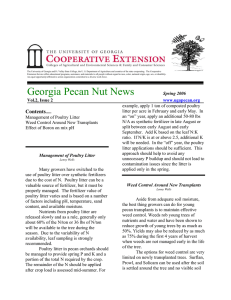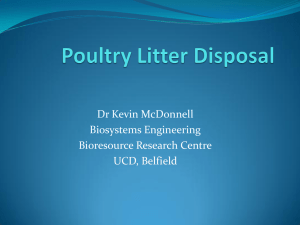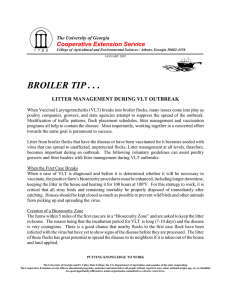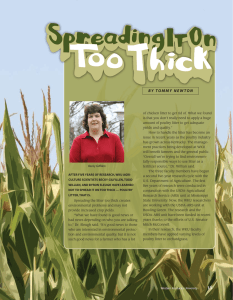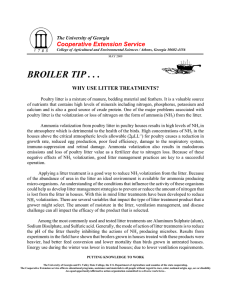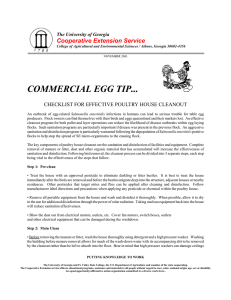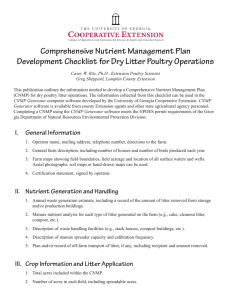Effect of storage time on the dynamics of As speciation... biosolid material
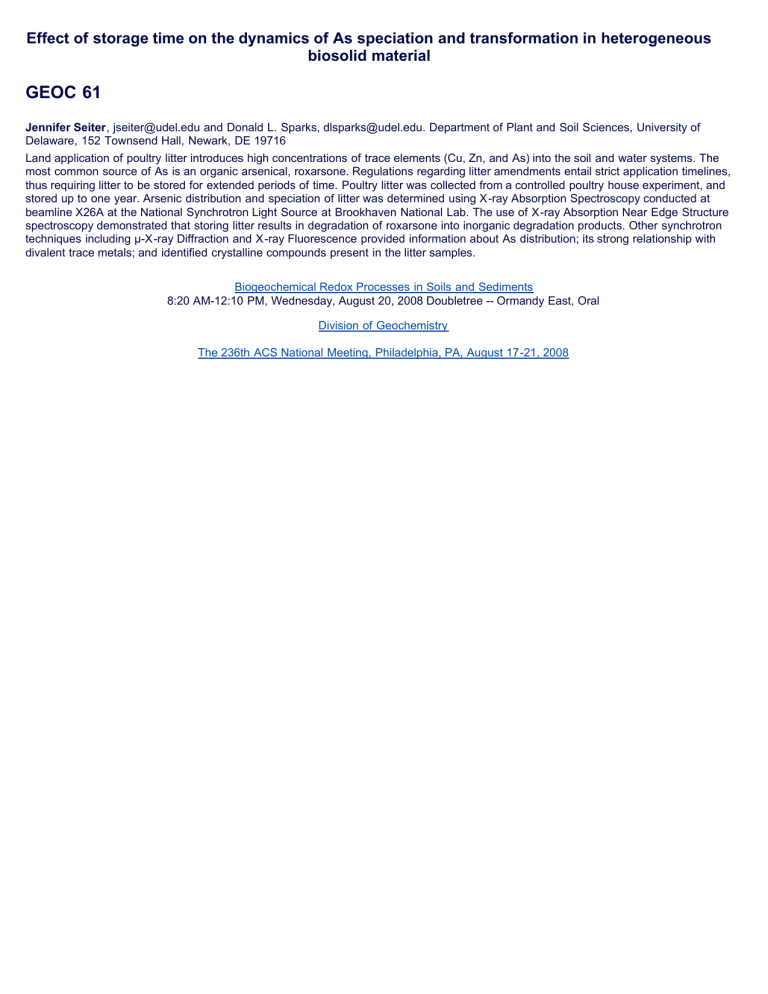
Effect of storage time on the dynamics of As speciation and transformation in heterogeneous biosolid material
GEOC 61
Jennifer Seiter , jseiter@udel.edu and Donald L. Sparks, dlsparks@udel.edu. Department of Plant and Soil Sciences, University of
Delaware, 152 Townsend Hall, Newark, DE 19716
Land application of poultry litter introduces high concentrations of trace elements (Cu, Zn, and As) into the soil and water systems. The most common source of As is an organic arsenical, roxarsone. Regulations regarding litter amendments entail strict application timelines, thus requiring litter to be stored for extended periods of time. Poultry litter was collected from a controlled poultry house experiment, and stored up to one year. Arsenic distribution and speciation of litter was determined using X-ray Absorption Spectroscopy conducted at beamline X26A at the National Synchrotron Light Source at Brookhaven National Lab. The use of X-ray Absorption Near Edge Structure spectroscopy demonstrated that storing litter results in degradation of roxarsone into inorganic degradation products. Other synchrotron techniques including µ-X-ray Diffraction and X-ray Fluorescence provided information about As distribution; its strong relationship with divalent trace metals; and identified crystalline compounds present in the litter samples.
Biogeochemical Redox Processes in Soils and Sediments
8:20 AM-12:10 PM, Wednesday, August 20, 2008 Doubletree -- Ormandy East, Oral
Division of Geochemistry
The 236th ACS National Meeting, Philadelphia, PA, August 17-21, 2008





